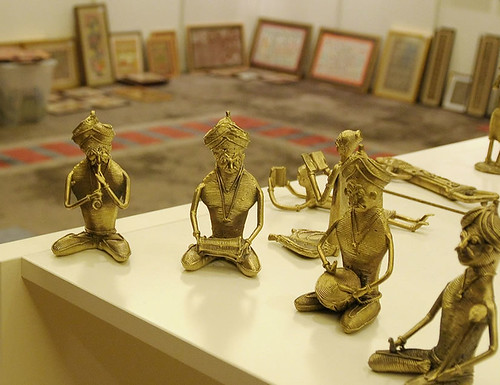Context:
Recently, Chattisgarh’s Ocher Studio has been helping to preserve the 4,000-year-old craft ‘Dhokra Shilpkala Art’.
About Dhokra Shilpkala Art:
- It is believed to derive its name from the Dhokra Damar tribes, who are traditional metal smiths in Central India.
- It has a rich history spanning over 4,000 years, making it one of the oldest documented metal casting techniques.
- The roots of Dhokra Sculpture can be traced back to tribal communities in Chhattisgarh, Jharkhand, West Bengal, and Odisha, where it has become an integral part of their cultural and religious practices.
Artistry and Designs:
- Characterized by rustic charm, Dhokra Shilpkala features organic designs inspired by nature, mythology, and everyday life.
- Artisans draw inspiration from a variety of sources, incorporating motifs such as animals, birds, deities, and tribal symbols into their creations.
- From small figurines and jewelry to larger sculptures and functional items, Dhokra Shilpkala encompasses a diverse range of artistic expressions.
Technique and Process: Dhokra Shilpkala distinguishes itself through its unique metal casting technique, utilizing the lost wax casting method, also known as cire perdue.
Lost wax method:
- The lost wax method, also known as investment casting or precision casting, is a process used to create metal sculptures, jewelry, and intricate metal parts with high accuracy and detail.
Process of lost wax method:


